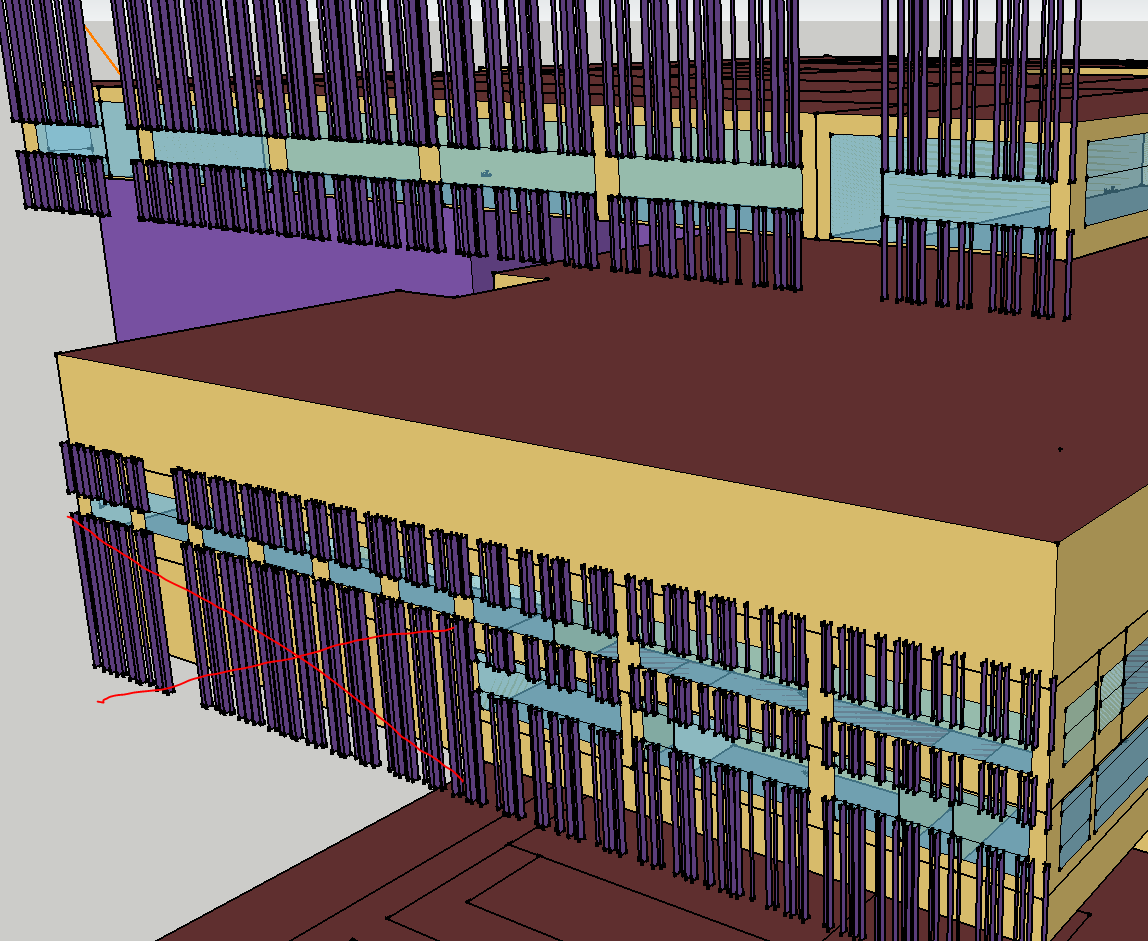Simulation time with complex external shading
I am modeling some complex external shading alternatives with OS/E+ and there are now thousands of shading surfaces in my OS SketchUp model (architecture!). Unfortunately the shadow calculations are now crippling the run time of my model.
Are there any simulation control tips, or other considerations, to help reduce simulation run time when there are very large numbers of shading surfaces present?
Some observations: under simulation settings > shadow calculation in OS, I noticed the default number for 'calculation frequency' is set to 7 days while the E+ Input-Output reference suggests a default of 20 days. Also the 'maximum figures in shadow overlap calculations' is set to 15,000 and my eplusout.err file gives the warning 'DeterminePolygonOverlap: Too many figures [>15000] detected in an overlap calculation.'
Any insight is appreciated, thanks!







Holy shading devices, Batman!
Hei @LyleK how did you model those vertical fins?
@LyleK ......................